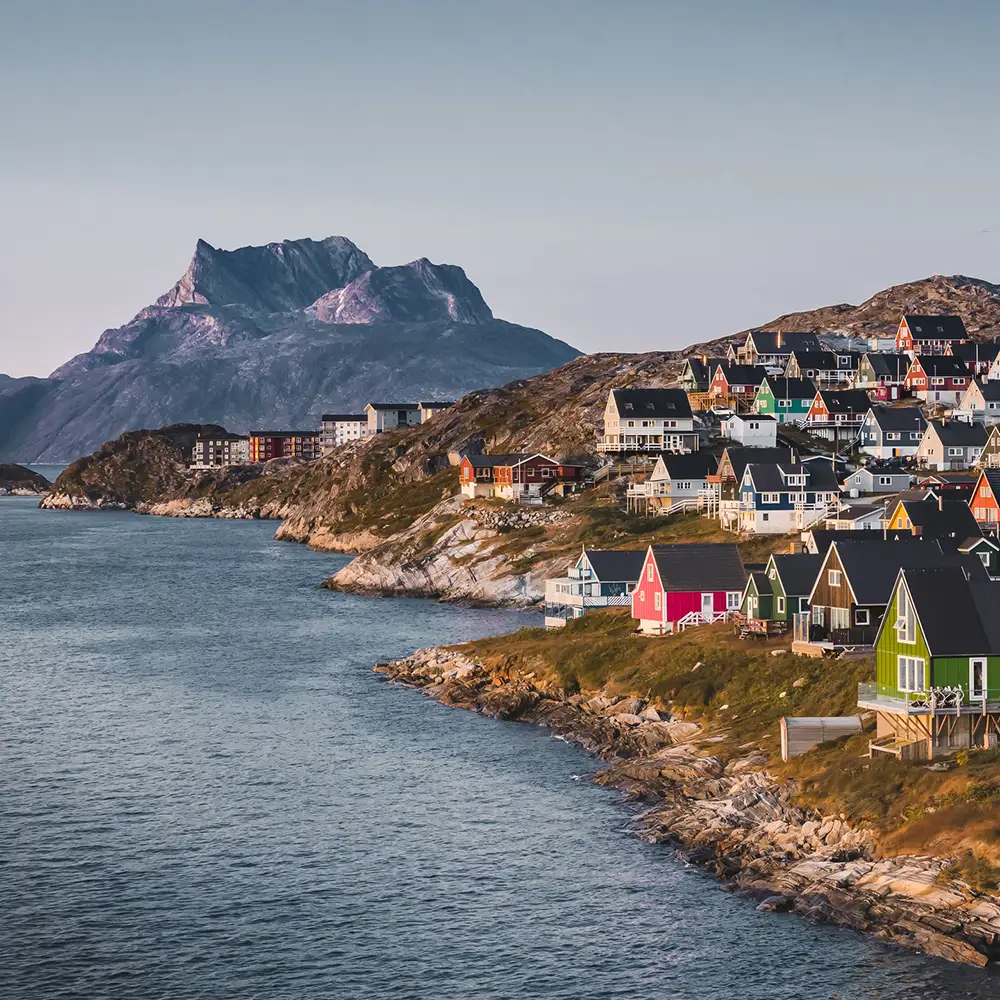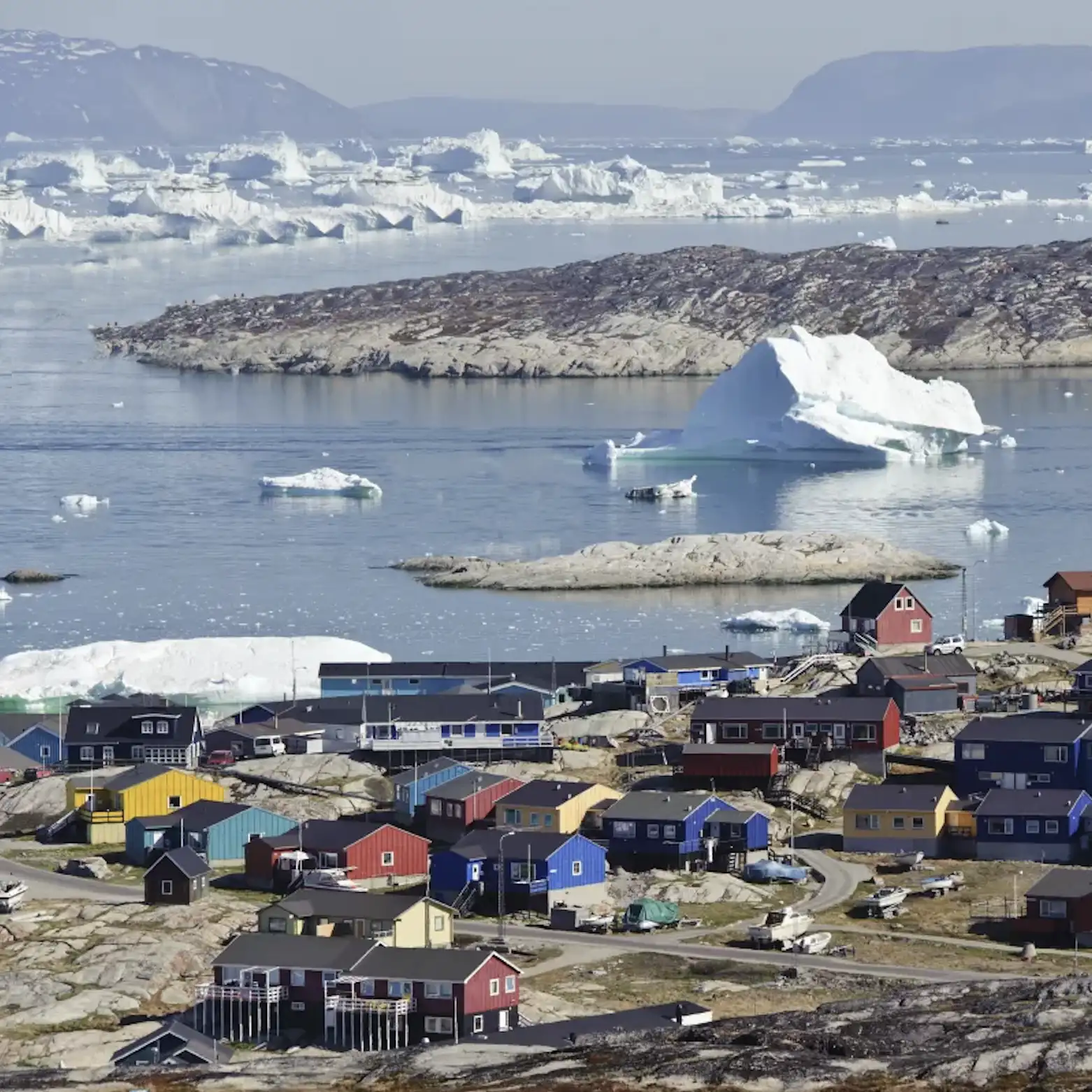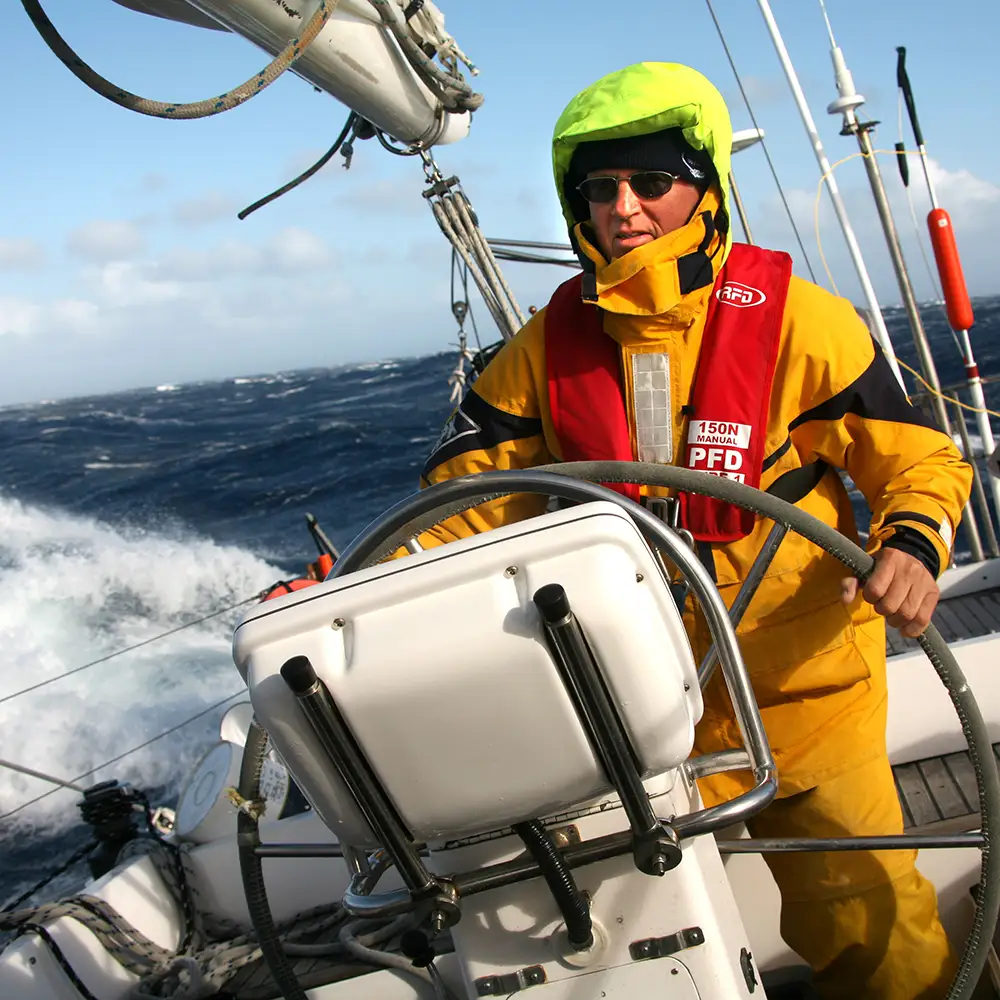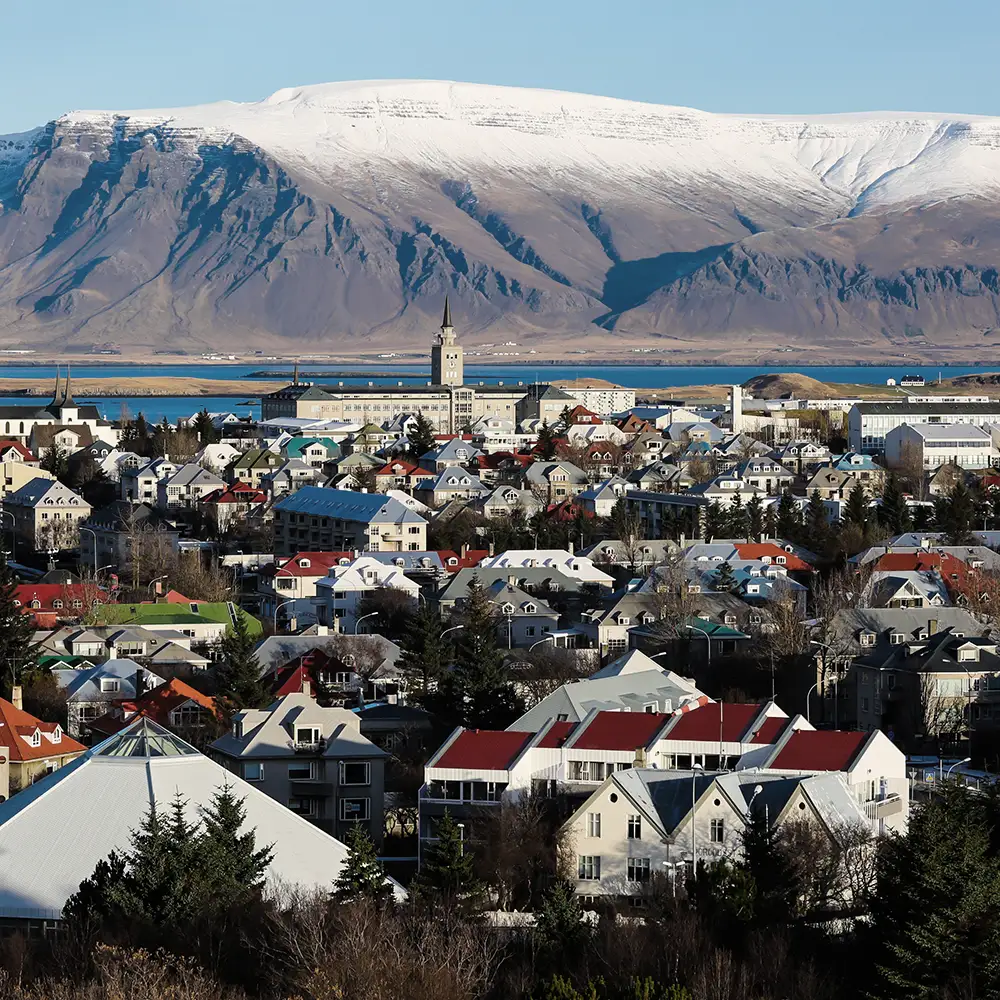Nothing on this voyage is guaranteed. This is real Arctic expedition sailing, and the wind, ice, and weather at the time will decide where we can go. The list below is a selection of the major highlights we hope to reach during the passage. Some we may achieve. Some we may not. That uncertainty is part of the adventure.
Nuuk, Greenland

The voyage begins in Nuuk, a small frontier town enclosed by ancient rock and long Arctic fjords. Even at the harbour, fragments of glacier ice move quietly with the tide. After preparing the yacht and settling in as a crew, we set out. The fjord opens around us, with mountains on every side, and it’s common to see the blows of whales or the movement of seabirds within minutes of leaving.
Arsuk Fjord

Arsuk Fjord is a place of high cliffs, calving ice and deep, cold water. Glaciers descend almost to the sea, and seals rest on the floes in the stillness. Exploring by RIB is a highlight, with the chance to approach the glacier’s face or, if conditions allow, visit the small settlement of Arsuk to meet those who live in this remote corner of Greenland.
Qaqortoq and Hvalsey

Further south lies Qaqortoq, one of Greenland’s oldest towns, set between low hills and sheltered water. Traditional wooden houses and stone carvings give it the feel of an open-air gallery, and the surrounding tundra comes alive in summer with wildflowers and views across the fjord system. Nearby sits Hvalsey Church, the best-preserved Norse ruin in Greenland, standing quietly above the water after nearly nine centuries.
Tasermiut Fjord

If the ice allows, Tasermiut is extraordinary. Granite walls rise more than a thousand metres almost straight from the water, with glaciers lying deep in the valley beyond. Along the shoreline are traces of Inuit and Norse settlement, and the higher ground is home to muskox, sometimes visible from the boat. It is one of the most striking fjords in the south.
Eriksfjord (Brattahlid)

Conditions may also let us enter Eriksfjord, the heart of the old Norse settlement founded by Erik the Red. The landscape softens here, with sheltered slopes and calm water, and the remains of Brattahlid give a clear sense of the people who once farmed this land at the edge of the known world.
Aappilattoq
Where two long fjords meet beneath sheer granite peaks lies Aappilattoq, a small, isolated community of just over a hundred people. The setting is remarkable and gives a rare glimpse of daily life lived deep within the Greenlandic fjords.
Prince Christian Sound

Prince Christian Sound sits at the very southern tip of Greenland and is one of the most dramatic waterways in the Arctic. The passage runs for about sixty miles between the mainland and a chain of islands, with glaciers dropping ice straight into the channel. The peaks on either side rise steeply and almost bare. Apart from the weather station at the entrance and the village of Aappilattoq, there is little sign of human presence. Whales and seals are common here, and the scale of the place is unforgettable.
Crossing the Denmark Strait

Leaving Greenland, we make the long offshore passage to Iceland. It’s around 650 miles and usually takes four days. This is classic high-latitude sailing: cold air, long seas, steady watches and wildlife often close by. The sunsets out here can be remarkable.
Reykjavik

We make landfall in Reykjavik, Iceland’s small and lively capital. After the remoteness of Greenland and the distance of the strait, the cafés, bakeries and geothermal pools offer a gentle return to everyday life. A fitting place to end a serious Arctic passage.